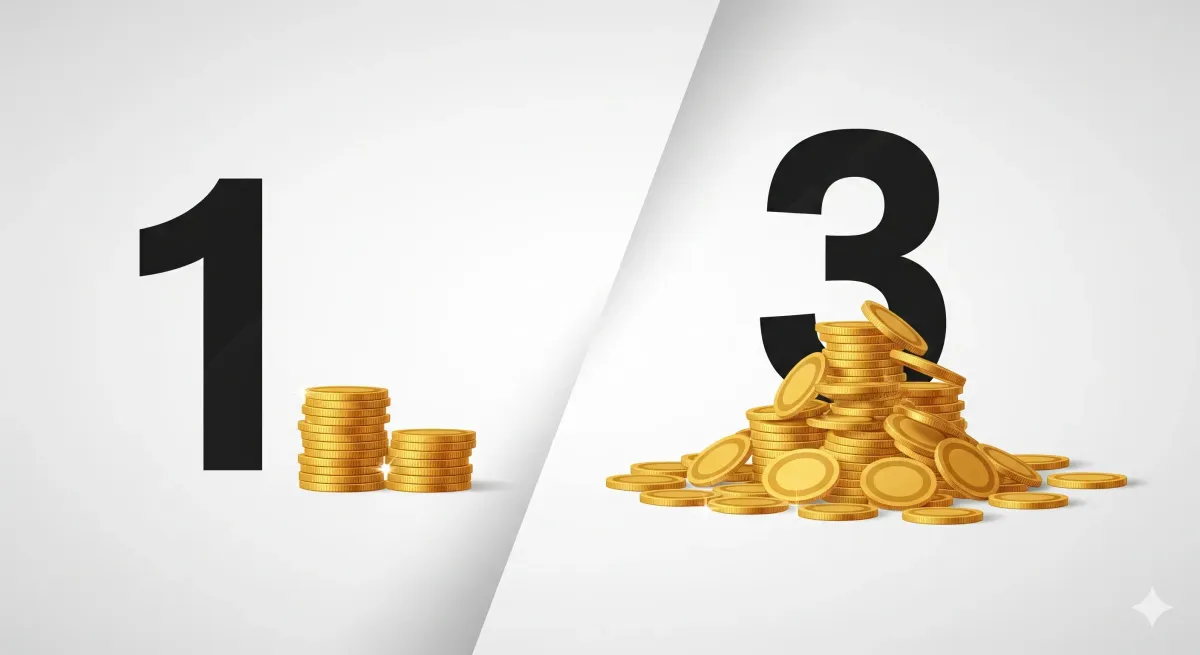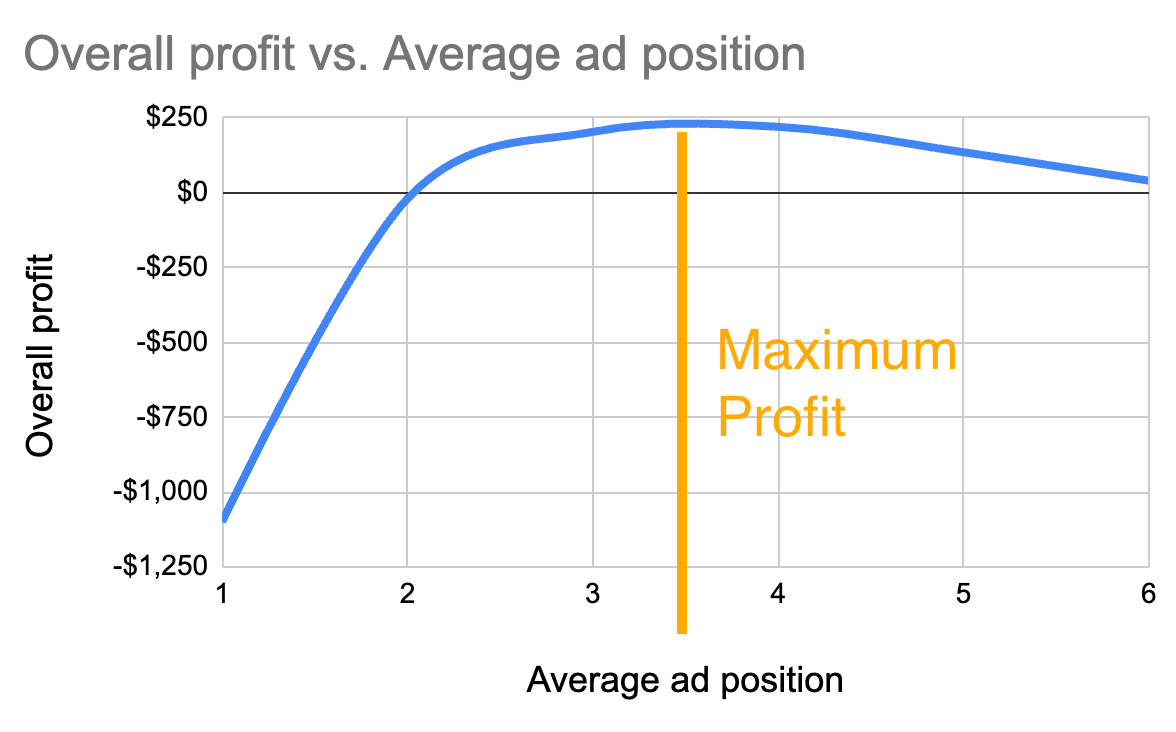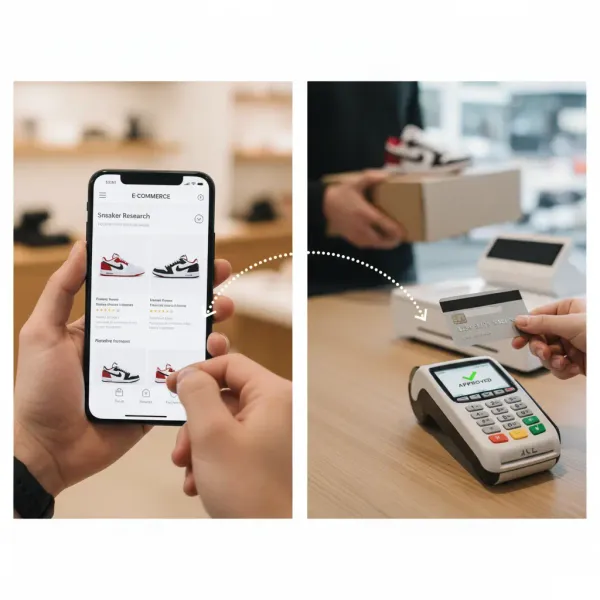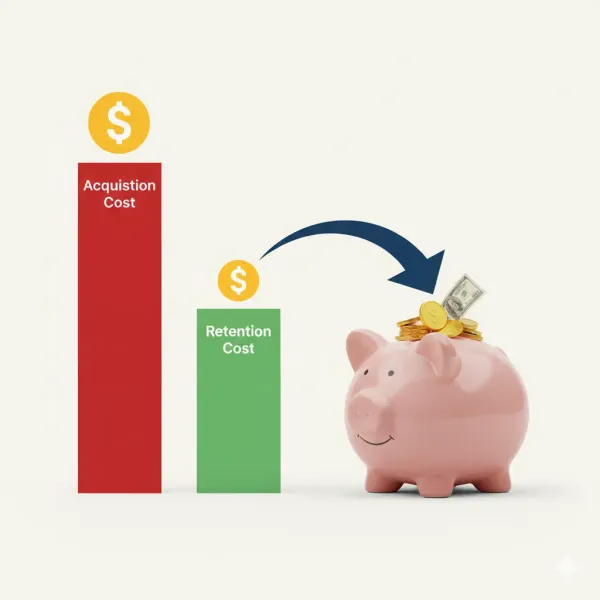Maximizing Profit: Why Getting your Ad to Rank #1 Isn't Always the Best Bet

In the competitive world of online advertising, the allure of the top spot is undeniable. We're often told that ranking number one is the ultimate goal, promising a flood of traffic and conversions. While there's certainly truth to the importance of high visibility, a closer look reveals that blindly chasing the #1 position can sometimes be a costly endeavor that doesn't always translate to maximized profit.
The Undeniable Power of High Rankings
Let's start by acknowledging why everyone wants to be at the top. The data consistently shows that higher rankings correlate with significantly better performance. Consider these statistics:
- First Page Dominance: Studies frequently show that the first page of search results captures the vast majority of clicks, often upwards of 90%. If you're not on the first page, your visibility is severely limited.
- Top Three Advantage: Within the first page, the top three organic results typically garner over 60% of all clicks. For paid ads, the top positions also see a disproportionate share of attention.
- Click-Through Rates (CTR): The difference in CTR between the #1 ad spot and lower positions can be dramatic. While precise numbers vary by industry and keyword, it's not uncommon for the top ad to have a CTR several times higher than the second or third position. More clicks, in theory, mean more potential customers.
- Conversion Rates: Higher visibility can also lead to better conversion rates, as users often perceive top-ranked results as more authoritative or relevant.
It's clear that visibility matters. But at what cost?
The Hidden Costs of the Top Spot
This is where the conversation shifts. Achieving and maintaining the #1 ad rank, especially for highly competitive keywords, comes with a significant price tag.
- Skyrocketing Cost-Per-Click (CPC): The bidding wars for prime ad real estate can drive CPCs through the roof. Every advertiser is vying for that top spot, pushing up the price you pay for each click. While you might get more clicks, if each click costs too much, your profit margins quickly erode.
- Diminishing Returns: There's a point of diminishing returns. The difference in CTR between the #1 and #2 spot might be substantial, but the difference in CPC could be even more so, making the incremental gain in clicks not worth the additional expenditure.
Imagine a scenario where securing the #1 spot requires a 50% increase in your CPC compared to the #2 spot, but only yields a 15% increase in clicks. Your overall ad spend goes up significantly, but your actual profit might not follow suit, or could even decrease.
To illustrate this point, let's look at a hypothetical graph demonstrating the relationship between ad spend and overall payoff (profit).

As you can see, while ad spend continually increases as you aim for higher ranks, the normalized profit (blue line) peaks around the 2nd or 3rd position before starting to decline, indicating a "sweet spot" where you maximize your return on investment. Pushing for the absolute #1 spot can lead to higher spend with a lower overall ROI.
Targeting for Profit: The Smarter Approach
Instead of fixating solely on the #1 rank, a more strategic approach involves leveraging estimated traffic and CPC data to identify the most profitable keywords and ad positions.
- Analyze Estimated Traffic vs. CPC: For each keyword, your ad platform provides estimates for traffic volume and CPC. Don't just look for high traffic; look for keywords where the estimated traffic is significant, but the CPC isn't prohibitively expensive. These are often long-tail keywords or slightly less competitive terms that can still bring in valuable clicks.
- Calculate Potential ROI: Use these estimates, combined with your historical conversion rates and average customer value, to calculate the potential return on investment (ROI) for different keywords and bid strategies.
- Example: If a keyword at position #3 has an estimated CPC of $1.50 and a projected 2% conversion rate, and your average profit per conversion is $50, then each click generates ($50 * 0.02) = $1.00 in profit. With a $1.50 CPC, you're losing money.
- Example 2: If another keyword at position #4 has an estimated CPC of $0.75 and a projected 1.5% conversion rate, then each click generates ($50 * 0.015) = $0.75 in profit. In this scenario, you're breaking even.
- Example 3: Find the sweet spot where your profit per click significantly outweighs the CPC.
- Optimize for Position, Not Just Rank: Sometimes, holding the #2 or #3 position can be far more profitable than the #1 spot. You still get excellent visibility, but at a significantly reduced CPC, leading to a much better ROI. Your goal should be to find the highest rank that provides the most efficient use of your ad budget for maximum profit.
- Monitor and Adjust: The digital advertising landscape is constantly changing. Continuously monitor your ad performance, CPCs, CTRs, and conversion rates. Be prepared to adjust your bids and keyword targeting to maintain profitability.
Conclusion
While the top ad spot is enticing, true success in online advertising isn't just about being #1; it's about maximizing your profit. By understanding the competitive landscape, analyzing the costs versus the benefits of different ad positions, and strategically targeting keywords based on estimated traffic and CPC, you can ensure your ad spend is working smarter, not just harder, to drive the best possible return on your investment.


